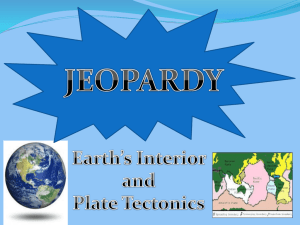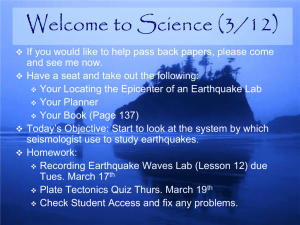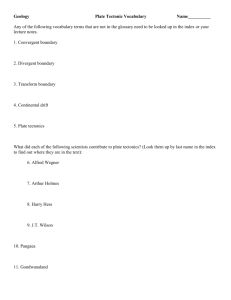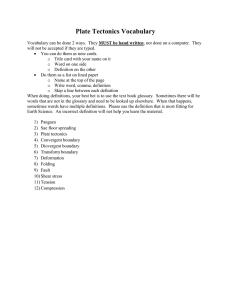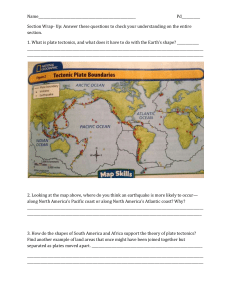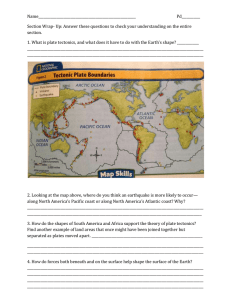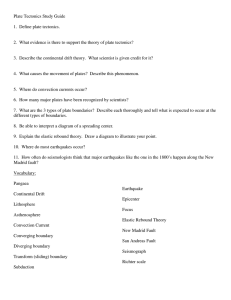Geol 1045 2/1/07
advertisement
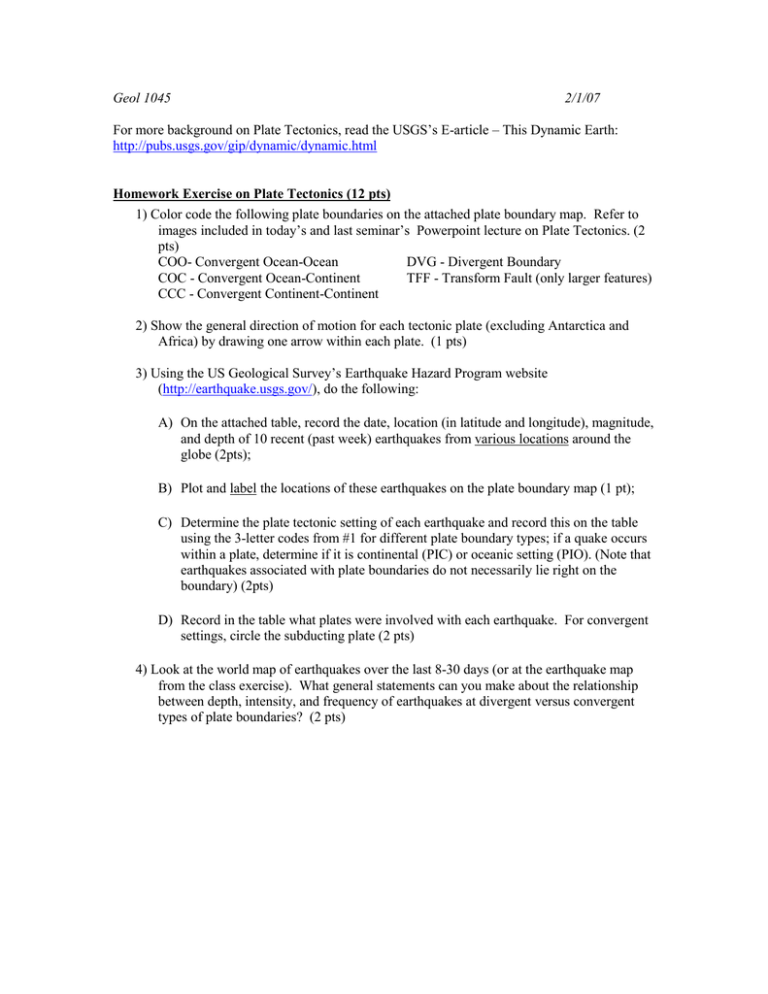
Geol 1045 2/1/07 For more background on Plate Tectonics, read the USGS’s E-article – This Dynamic Earth: http://pubs.usgs.gov/gip/dynamic/dynamic.html Homework Exercise on Plate Tectonics (12 pts) 1) Color code the following plate boundaries on the attached plate boundary map. Refer to images included in today’s and last seminar’s Powerpoint lecture on Plate Tectonics. (2 pts) COO- Convergent Ocean-Ocean DVG - Divergent Boundary COC - Convergent Ocean-Continent TFF - Transform Fault (only larger features) CCC - Convergent Continent-Continent 2) Show the general direction of motion for each tectonic plate (excluding Antarctica and Africa) by drawing one arrow within each plate. (1 pts) 3) Using the US Geological Survey’s Earthquake Hazard Program website (http://earthquake.usgs.gov/), do the following: A) On the attached table, record the date, location (in latitude and longitude), magnitude, and depth of 10 recent (past week) earthquakes from various locations around the globe (2pts); B) Plot and label the locations of these earthquakes on the plate boundary map (1 pt); C) Determine the plate tectonic setting of each earthquake and record this on the table using the 3-letter codes from #1 for different plate boundary types; if a quake occurs within a plate, determine if it is continental (PIC) or oceanic setting (PIO). (Note that earthquakes associated with plate boundaries do not necessarily lie right on the boundary) (2pts) D) Record in the table what plates were involved with each earthquake. For convergent settings, circle the subducting plate (2 pts) 4) Look at the world map of earthquakes over the last 8-30 days (or at the earthquake map from the class exercise). What general statements can you make about the relationship between depth, intensity, and frequency of earthquakes at divergent versus convergent types of plate boundaries? (2 pts)
